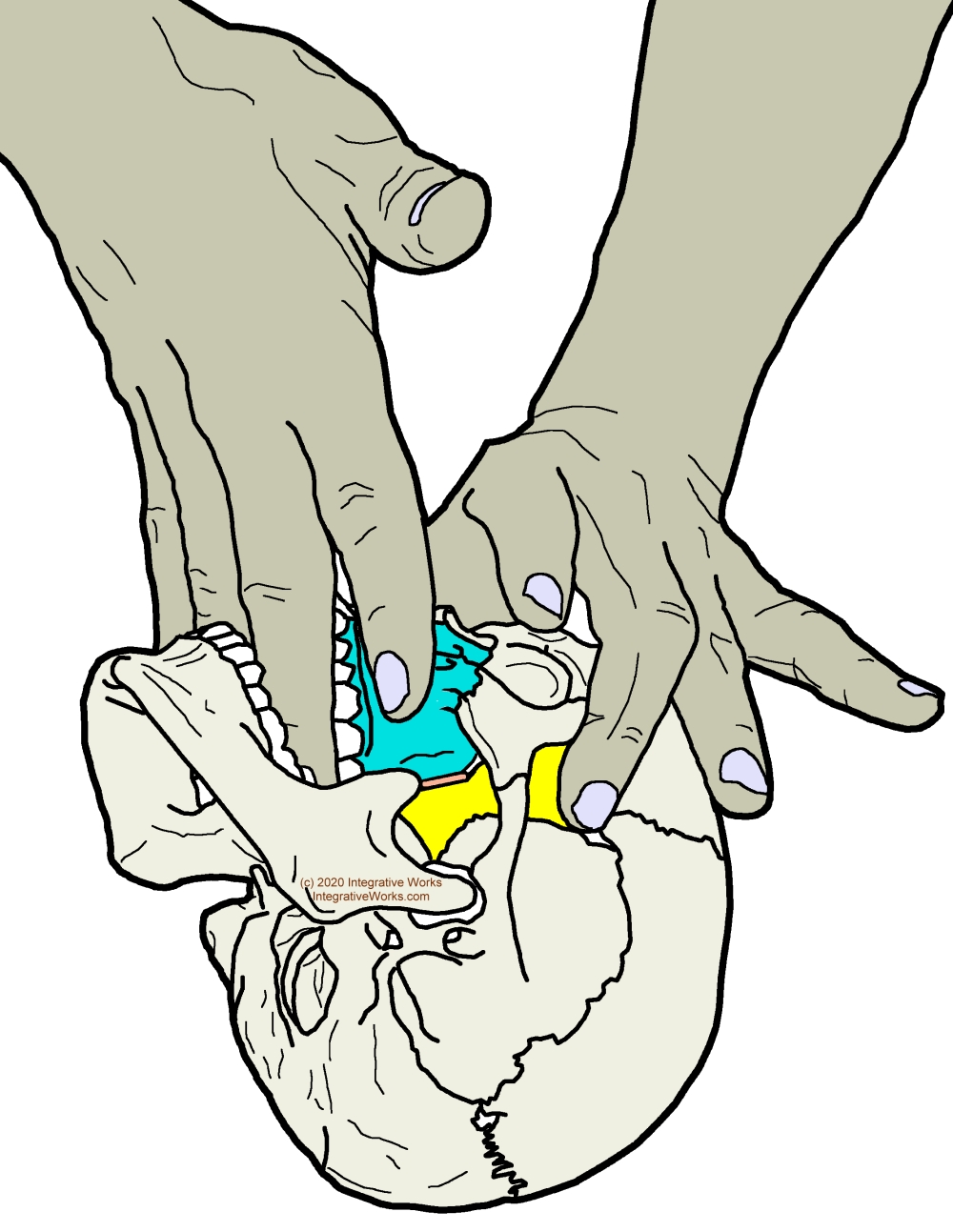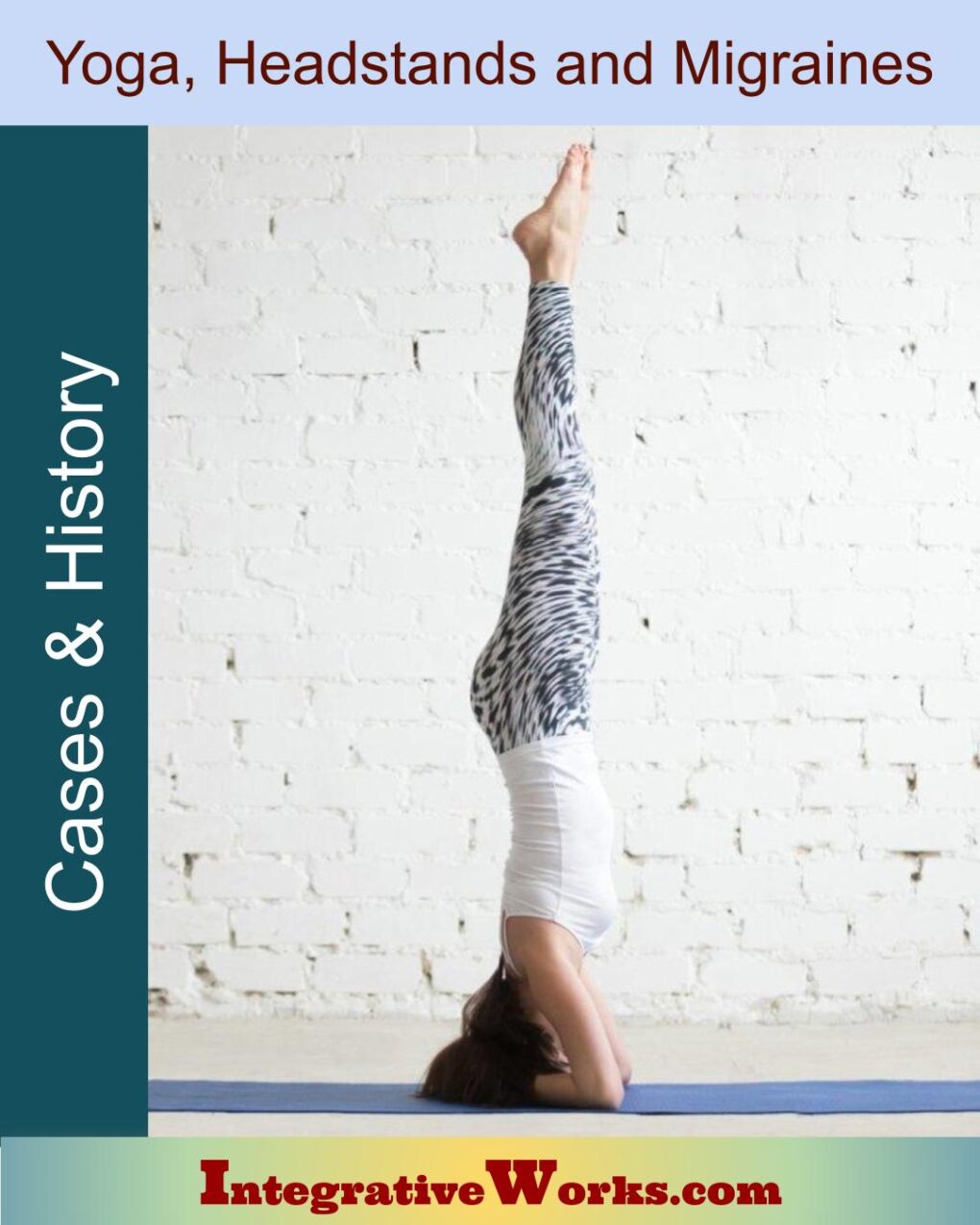Take-One
Nurse Headstand was in her 40s when she first started seeing me. An academic, she taught at a major university and heard about me through some colleagues. Coincidentally, I was fascinated with her work. She had written chapters for textbooks on sensory integration specifically for therapists. Working with her was easy. She was sensible and well-read when it came to bodies and various types of therapies. She explained that she had migraines that seemed related to the headstands in her yoga classes. As well, she was a published academic in a major university with a very respected program for therapists. So, she had a great referral network. The top migraine people in town at Emory and the major hospitals had already worked with her.
Interesting Case
I was very interested in the case for several reasons. First, why are headstands so important to yoga practitioners? I’d had several practitioners that had neck and head issues but really wanted to continue with headstands. I casually asked if she had considered avoiding the headstands. She squinted and hesitantly said “yeah…” with a knowing smile. It’s like talking to cyclists, or those people who put 14 decorative pillows on the bed every morning. They are just compelled to do it.
Secondly, In my practice, I really believe that our goals – the patient’s and mine – should be to help the body become better at self-correcting. Similarly, I try to avoid defining an increasing list of limitations – or endless self-care.
Thirdly, I’ve worked on a lot of researchers over the years. I live in a neighborhood near the CDC and adjacent to Emory University. So, a few wander my way. They often seem to be coming to me after they have exhausted more science-y approaches. They hear that, for a craniosacral therapist, I am surprisingly effective with weird pain patterns. They’re skeptically curious. And always interesting.
By the way, my success rate is probably because I’m actually a craniostructural therapist parading around as a craniosacral therapist. Yeah, you probably don’t get that unless you’re a cranial geek, and then that joke really kills.
As for Nurse Headstand, we worked together weekly for a few months. We got her migraines under control. She was happy and decided that she’d call me when she needed me. By the way, for many people with migraines, cranial is an effective approach. I’ve helped a lot of people with them and don’t hesitate to refer them out to a doctor when needed.
Take-Two
Boo!
She came back several years later. Again, she had migraines, and a rare condition called hyperekplexia. It seems to be a genetic condition that produces startle responses. It was intense as she had many small startle responses a day. Yeah. Like someone just scared her a bit. Dozens of times a day. It’s a pretty unusual condition, and, once again, she did her homework and saw all the best doctors in town. She had tried some therapies and meds but didn’t have much luck.
We worked together for a couple of months. We made steady progress. It was touch and go trying to figure out the right releases, but, over several weeks, we reduced the frequency to a few times a day. She came in one week and hadn’t had a startle response all week. She was happy, and we stopped working together.
By the way, I’m not saying that I’m an expert in hyperekplexia or that cranial is the right treatment for everyone. It was simply an effective approach for this client.
Take-Three
She called me last Sunday. It was over a dozen years since her first visit. She was surprised that I recognized her name and the details of her case. Once again, she had migraines. This time, they came with dizziness and nausea. She asked me how I did with that. I said that I often worked on that problem and that I’d be glad to look at it. I happened to be at the office for a few hours that day, and I told her to stop by.

Same Story – Different Symptoms
She explained that she had experienced several episodes recently. She had already spoken to some doctors about it. She had also done her research and was doing the Epley maneuver. It didn’t help and may have made it worse. She was still practicing yoga and, once in a while, she’d be in the middle of the class and would be suddenly stricken with nausea, dizziness, and a frontal migraine. She smiled and sheepishly said that maybe she should give up yoga. Sure. And those decorative pillows, too. I felt like this was a test, and I knew to smile and kept asking questions.
I took her through the SCM stretch that calms the vagus nerve and it helped a little. Her SCMs still seemed quite imbalanced. So I laid her on the table. She remarked that laying down usually aggravated her condition, but didn’t bother her after the stretch. Good information. I worked on her cranium while we chatted about craniosacral history. I explained the difference between craniosacral and craniostructural work. She remarked that my work was very different from other craniosacral therapists. She had nice improvements but still seemed unstable when she walked.
I explained to her that I needed to do this thing where I worked in the back of her mouth for a few minutes. I explained that we could go about this in other ways, but it usually isn’t as effective. She, like most sane people, was a little concerned that she might hurl on me. I explained that if she wrapped her left thumb in her fist, it would suppress her gag reflex. Again, like most sane people, she was skeptical. And, like most clients, but not all, she was willing to try the thumb thing. Two minutes later, she remarked that she was surprised that she didn’t gag, and her head felt very different. Better. More stable.
Same, Predictable Happy Ending
I fine-tuned a little bit more and sent her for a walk down the hall. No dizziness. No nausea. No headache. I gave her a few self-care recommendations. She was surprised and delighted. She smiled as she went out the door. I watched her walk confidently to the car to tell her husband.
I sent her a text a week later asking about her head. She said that her head was perfect and she was doing her self-care. Yay.
After 25 years at this, I’m still surprised and delighted on a regular basis. It’s a great job.
I’m Just Gonna Leave This Here
You know, in case you’re frustrated with the pain and would like to try a bench. It’s the best seller on Amazon with a great rating. And, it is affordable. It costs less than a 90-minute therapy session with your favorite bodyworker. Take a look at this post on cervicogenic headaches. Do you have any of them? Consider the bench. They have a great return policy if you don’t like it.
Support Integrative Works to
stay independent
and produce great content.
You can subscribe to our community on Patreon. You will get links to free content and access to exclusive content not seen on this site. In addition, we will be posting anatomy illustrations, treatment notes, and sections from our manuals not found on this site. Thank you so much for being so supportive.
Cranio Cradle Cup
This mug has classic, colorful illustrations of the craniosacral system and vault hold #3. It makes a great gift and conversation piece.
Tony Preston has a practice in Atlanta, Georgia, where he sees clients. He has written materials and instructed classes since the mid-90s. This includes anatomy, trigger points, cranial, and neuromuscular.
Question? Comment? Typo?
integrativeworks@gmail.com
Follow us on Instagram

*This site is undergoing significant changes. We are reformatting and expanding the posts to make them easier to read. The result will also be more accessible and include more patterns with better self-care. Meanwhile, there may be formatting, content presentation, and readability inconsistencies. Until we get older posts updated, please excuse our mess.





